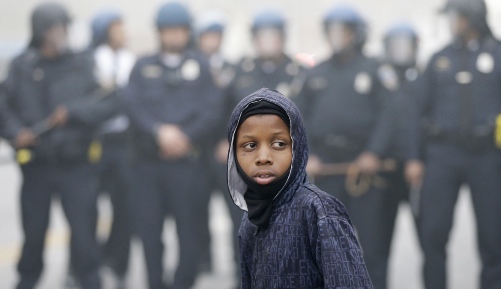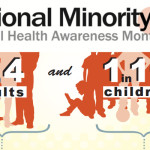Via: SAMHSA
The rash of highly visible, racially-charged violence in cities like Ferguson, Missouri, Baltimore, Maryland, McKinney, Texas, Charleston, South Carolina, highlights a critical mental health issue and a public health crisis. Experiencing and witnessing violence or traumatic events can adversely affect one’s mental health. Children and adults in these situations can experience trauma-related disorders that interfere with healthy functioning.
School children exposed to violence may have difficulty sleeping, concentrating, and maintaining attention, which puts them at-risk for poor school performance. Adults may become frightened, fearful, anxious, depressed, and have difficulty carrying out daily routines. The effects of traumatic events can also be passed from generation to generation and prevent individuals and communities from realizing their full potential.
The environment in which people live has a critical impact on their growth and well-being. However, violence and trauma occur at high rates in poorer communities of color where there are often inequities in available resources, services, and supports. This tears at the economic and social fabric and human connectedness of a community, putting residents at greater risk for assaults on their health and well-being.
At SAMHSA, we are trying to understand better how communities respond to violence and protect the safety and well-being of their communities. We developed a framework for addressing trauma and implementing a trauma-informed approach to help improve the capability of service systems and public institutions to better address trauma-related issues. We know that communities can collectively react to trauma in ways that are similar to how individuals respond. They can become hyper-vigilant, distrustful, and fearful or they can be re-traumatized by circumstances resembling earlier trauma. Historical trauma can be built into cultural norms of a community and passed from generation to generation.
The good news is that community trauma and violence is a preventable public health issue. Many communities have started to respond to trauma and violence by mobilizing resources and supports to address and de-escalate violence, understanding the root causes, and building collaborations across systems and services.
In an effort to support these communities in building resilience, and becoming adversity- and trauma-informed, SAMHSA recently convened teams from six cities to develop education, awareness, and city-operations that take into account the impact of trauma on its residents and its communities. From these six cities, we learned about:
- an emergency-room based violence interruption and retaliatory prevention program;
- a city mural arts programs to bring residents together to simultaneously transform physical space and mindsets and attitudes regarding connecting people across race, age, and neighborhood;
- law enforcement training on crisis intervention and trauma;
- districts creating trauma-informed schools and identifying the impact of uneven discipline practices across diverse populations;
- an entire county public health department training their workforce in trauma-informed care;
- neighborhood and faith-based leadership providing better supports for people re-entering the community from incarceration; and
- the use of media and public events to highlight the power of peer support.
So, we need to consider the impact that trauma and racial-related violence can have on the mental health of a community. Most importantly, we need to highlight community-driven strategies, assets and innovations that can promote and strengthen the mental health and well-being of communities across the country.
Via:: Everyday Trauma in our Communities: A Critical Mental Health Issue – A Public Health Crisis












